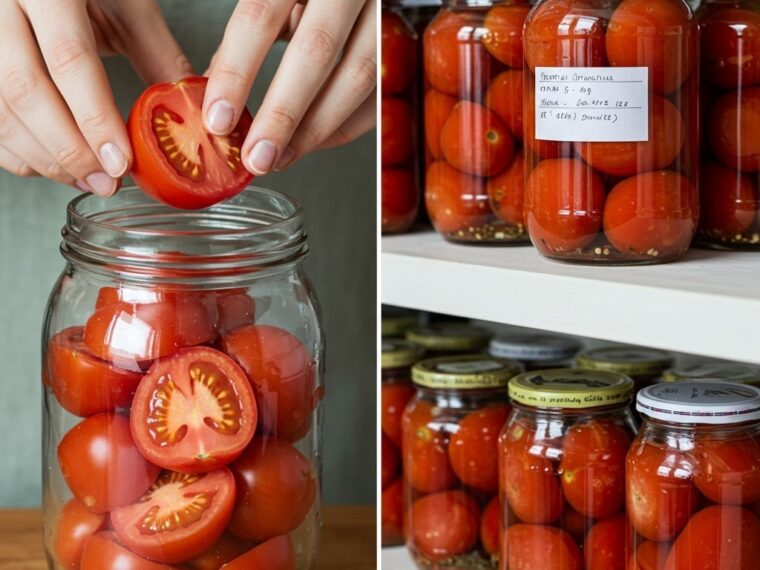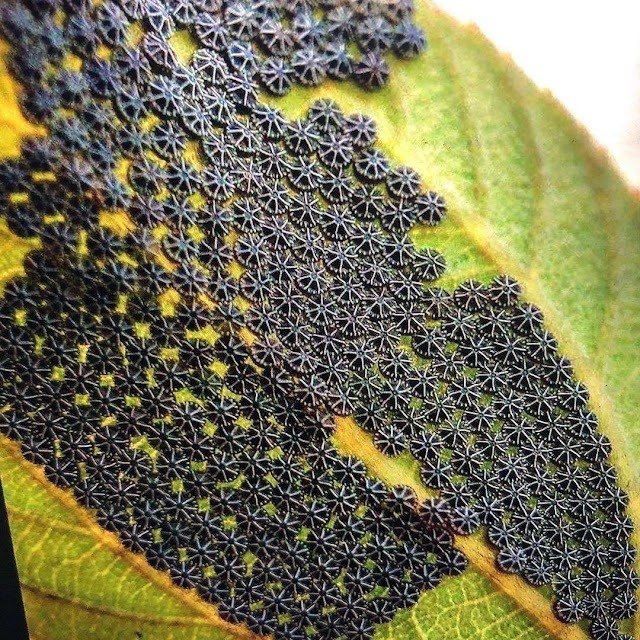- Wash the tomatoes thoroughly to remove dirt or pesticides.
- Remove stems and any damaged parts.
- Optional: Score a small “X” at the bottom of each tomato for easy peeling.
2. Blanch and Peel
- Bring a large pot of water to a boil.
- Carefully drop the tomatoes in for 30–60 seconds, until the skins start to split.
- Remove with a slotted spoon and transfer to an ice bath to stop cooking.
- Peel off the skins—it should come off easily.
3. Crush or Mill the Tomatoes
- Use a food mill, blender, or simply crush by hand for a rustic texture.
- If you want a smooth sauce, blend thoroughly.
4. Cook the Tomato Purée
- Pour the crushed tomatoes into a large pot.
- Simmer gently for 20–30 minutes to thicken slightly.
- Add salt and optional herbs. Avoid vinegar, as this method relies on sterilization and airtight sealing.
5. Sterilize Jars
- Wash jars and lids in hot, soapy water.
- Boil jars and lids for 10–15 minutes to sterilize.
- Dry jars with a clean towel before filling.
6. Fill the Jars
- Carefully pour hot tomato purée into the sterilized jars, leaving 1–2 cm of headspace.
- Wipe rims clean to ensure a tight seal.
- Place lids on securely but don’t overtighten.
7. Water Bath Canning
- Place jars in a large pot of boiling water, fully submerged.
- Boil for 35–40 minutes to ensure complete sterilization.
- Carefully remove jars and let them cool on a towel.
8. Storage
- Check seals once cooled: lids should not flex when pressed.
- Store in a cool, dark place. Properly canned tomatoes can last up to 2 years without vinegar.
Tips for Best Results
- Avoid overfilling: Leave space at the top of jars for expansion during boiling.
- Label jars: Write the date and type of tomatoes for easy tracking.
- Avoid direct sunlight: Heat and light can degrade flavor over time.
- Check seals before use: If a jar lid pops or bulges, discard or refrigerate immediately.
Uses for Your Preserved Tomatoes
Once you’ve mastered this method, these tomato jars can enhance countless dishes:
- Pasta sauces: Just add garlic, olive oil, and fresh herbs.
- Soups and stews: Boost flavor with homemade tomato base.
- Shakshuka or ratatouille: Ready-to-use tomatoes save prep time.
- Pizza sauce: Simmer and blend for a rich, natural topping.
- Condiments: Mix with onions and spices to make tomato chutney.
Advantages of This Vinegar-Free Method
- Pure tomato taste: No acidic tang, just natural sweetness and flavor.
- Long shelf life: Two years of delicious, ready-to-use tomatoes.
- Economical: Saves money compared to store-bought sauces and canned tomatoes.
- Customizable: Add herbs or spices to suit your favorite dishes.
Conclusion
Preserving tomatoes without vinegar is a simple, reliable way to enjoy summer’s bounty all year long. With the right selection of tomatoes, careful preparation, and proper canning technique, you can have jars of vibrant, flavorful tomatoes ready for any recipe—right in the middle of winter.
This method combines tradition, practicality, and culinary satisfaction, letting you capture the essence of ripe, juicy tomatoes for up to two years. Say goodbye to industrial sauces and hello to the rich, authentic flavor of home-canned tomatoes.
Pages: 1 2





